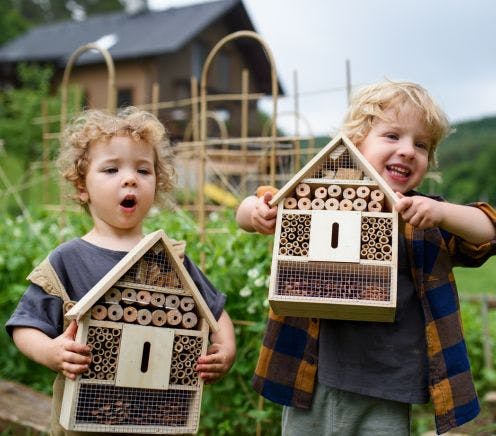Designing a Wildlife-Friendly Garden

Creating a wildlife-friendly garden is a rewarding way to transform your outdoor space into a haven for birds, insects, and other creatures. Not only does this enhance biodiversity, but it also provides a tranquil retreat where you can enjoy the soothing sounds of nature. With thoughtful planning and the right elements, you can design a garden that invites wildlife and offers a peaceful escape for you and your family.

1. Bird Baths and Water Features
Birds are attracted to water for drinking and bathing, making bird baths and water features essential for a wildlife-friendly garden. Choose bird baths with shallow, sloping edges to accommodate different bird species. Adding a small fountain or dripper can keep the water fresh and moving, which helps attract more birds.

2. Native Flower Seeds
Planting native flowers is crucial for supporting local wildlife. Native plants provide nectar for bees and butterflies, seeds for birds, and habitat for various insects. Opt for a mix of wildflowers that bloom at different times of the year to ensure a continuous food source. Consider seeds from species like coneflowers, black-eyed Susans, and milkweed, which are particularly beneficial for pollinators.
3. Diverse Plantings and Shrubs
Incorporate a variety of plants, including trees, shrubs, and ground cover, to create different layers of habitat. Dense shrubs and hedges offer shelter and nesting sites for birds, while ground cover plants can provide hiding spots for smaller creatures. Evergreen shrubs are excellent for year-round cover, and berry-producing plants like holly and hawthorn can provide food during the winter months.
4. Log Piles and Rock Gardens
Creating log piles and rock gardens can offer habitats for insects, amphibians, and small mammals. These features mimic natural environments and provide essential shelter and breeding grounds. Place a log pile in a shaded, damp area of your garden to attract beetles, woodlice, and fungi. Similarly, a rock garden can create microhabitats for frogs, and beneficial insects like ladybugs and solitary bees.

5. Birdhouses and Feeders
Install birdhouses to provide nesting sites for different bird species. Choose designs that are suitable for local birds, ensuring they have the right entrance hole size and are placed at appropriate heights. Bird feeders filled with seeds, suet, and nuts can supplement natural food sources, especially during the colder months. Place feeders in safe locations away from predators and near cover where birds can retreat.
6. Water Features
A garden pond or a small water feature can significantly enhance the wildlife appeal of your garden. Ponds attract a variety of wildlife, including frogs, dragonflies, and birds. Ensure the pond has gently sloping sides so that animals can easily access and exit the water. Adding aquatic plants can provide oxygen and additional habitat for pond-dwelling creatures.

7. Butterfly and Bee Gardens
Plant a dedicated area with nectar-rich flowers to attract butterflies and bees. Species like lavender, buddleia, and marigolds are particularly attractive to these pollinators. Including plants that flower at different times ensures a steady supply of nectar throughout the growing season. Avoid using pesticides, as they can harm beneficial insects.
8. Leaf Litter and Compost Areas
Allowing areas of your garden to have leaf litter and compost heaps can provide essential habitats for decomposers and insects. Leaf litter can attract hedgehogs and other small mammals, while compost heaps can be a haven for worms, beetles, and other invertebrates that help break down organic matter.

Enjoying Your Wildlife-Friendly Garden with a Bistro Set or Bench
To fully appreciate the beauty and tranquillity of your wildlife-friendly garden, incorporate seating areas where you can relax and observe nature. A bistro set tucked into a cosy corner or a bench under a tree can offer perfect spots to enjoy the sights and sounds of your garden. Consider placing these seats near bird feeders, water features, or flower beds to maximize your wildlife-watching opportunities.
Designing a wildlife-friendly garden is not only beneficial for the environment but also incredibly fulfilling for you as a gardener. By incorporating elements like bird baths, native plants, diverse habitats, and comfortable seating, you create a sanctuary where both wildlife and humans can thrive. Take the time to observe and enjoy the interactions of the creatures that visit your garden, and you'll find a deeper connection to nature and a greater appreciation for the biodiversity in your own backyard. So, get started on your wildlife-friendly garden today and watch as your outdoor space transforms into a vibrant, living ecosystem.














